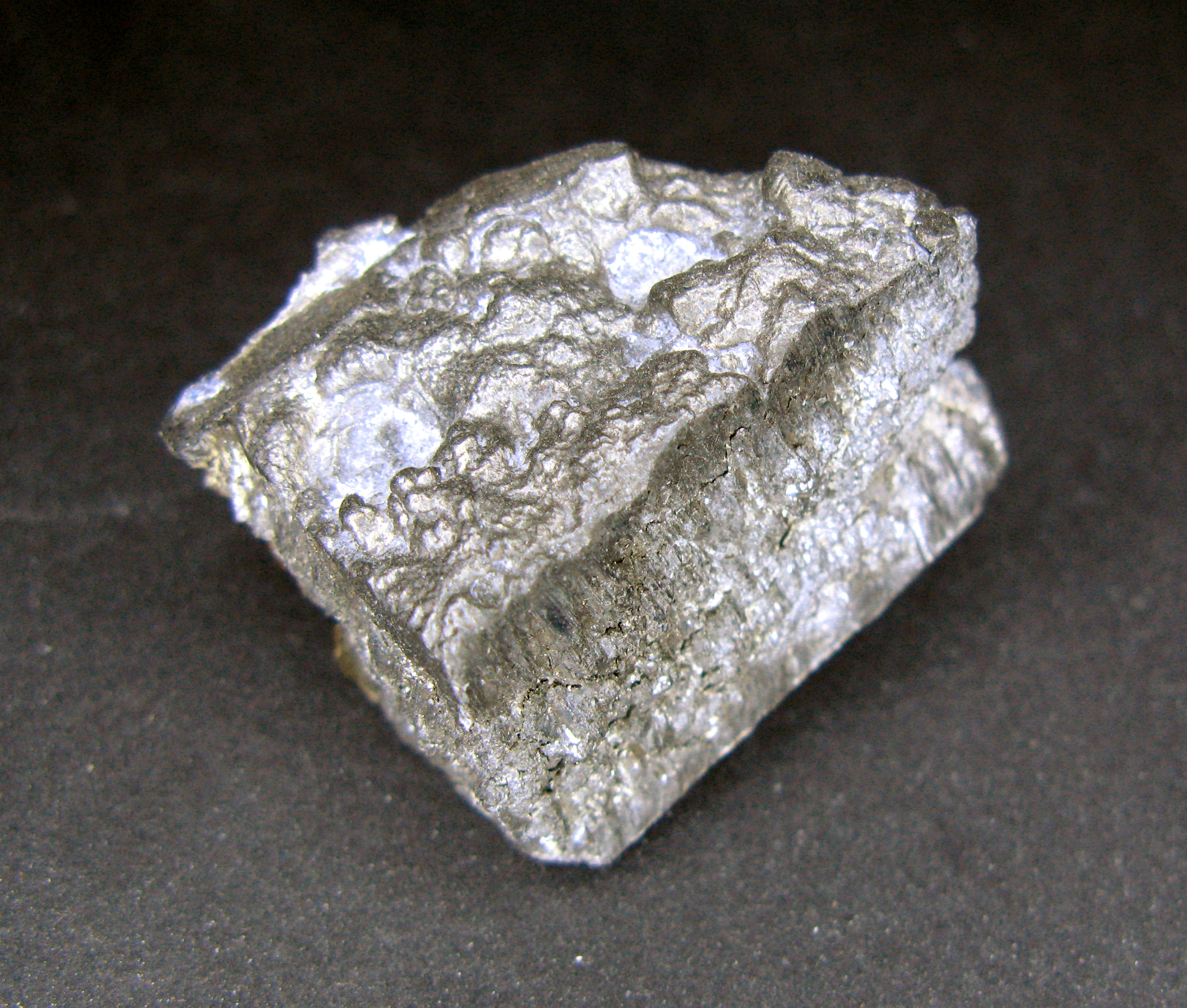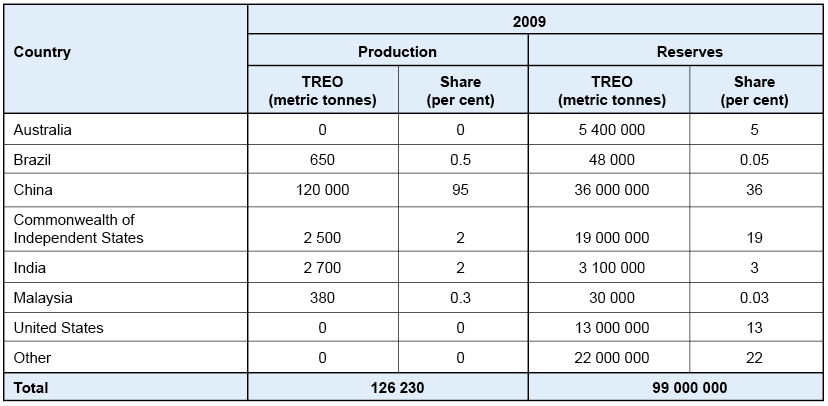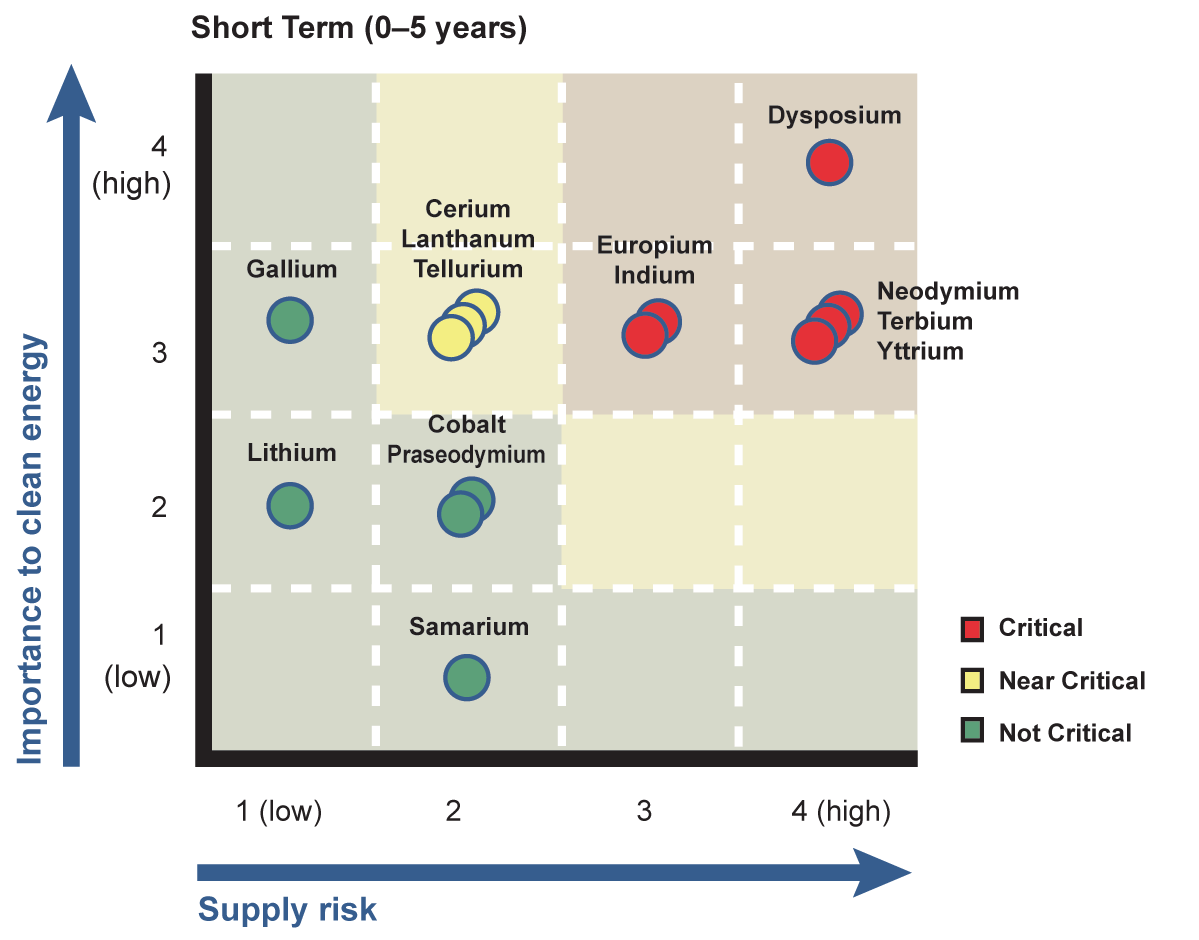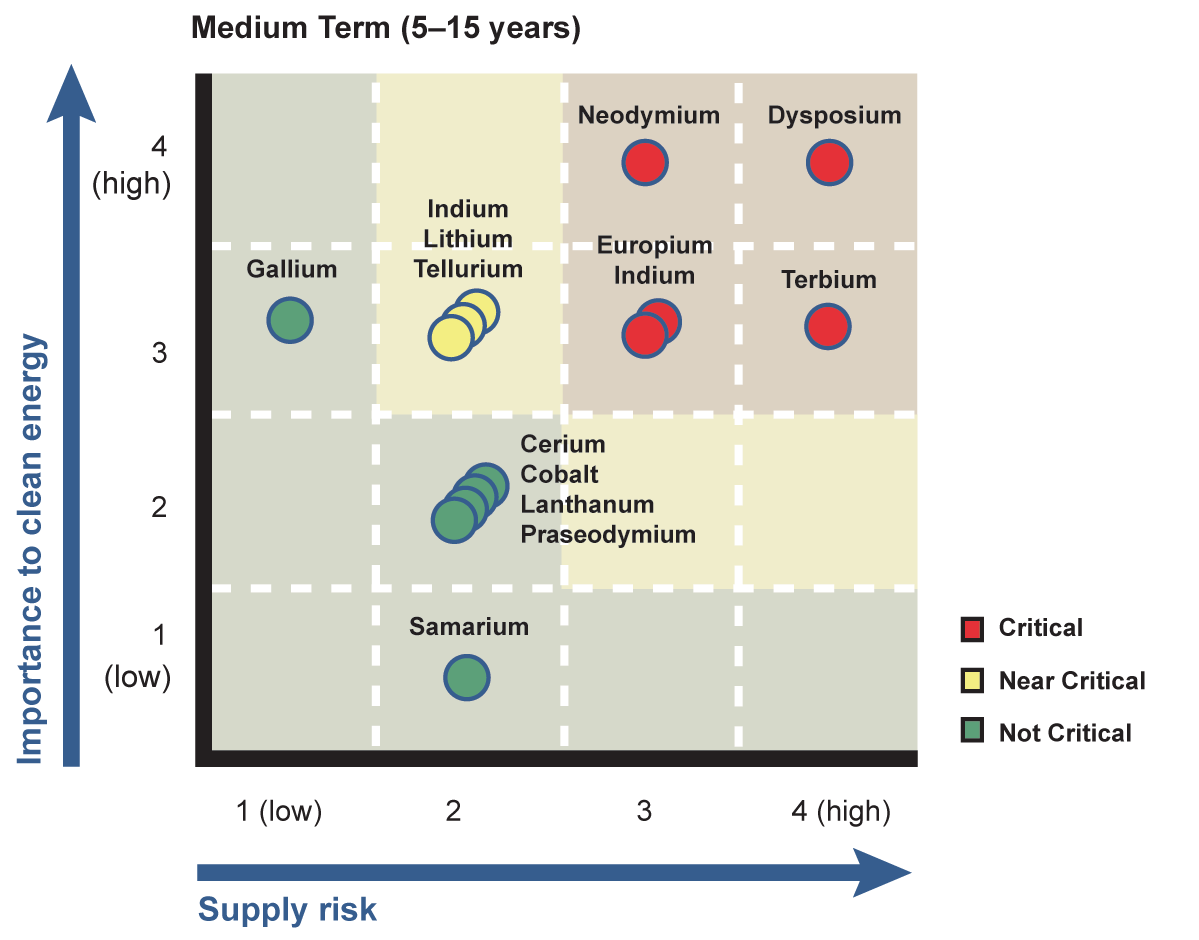|
Having trouble reading this email? Download the PDF.

Thematic Focus: Resources Efficiency and Climate Change
Green Economy Vulnerable to Rare Earth Minerals Shortages
Why is this issue important?
What are the findings and implications?
"Many new and emerging clean energy technologies, such as the components of wind turbines and electric vehicles, depend on materials with unique properties. The
availability of a number of these materials is at risk due to their location, vulnerability to supply disruptions and lack of suitable substitutes."
— Steven Chu, the United States Secretary of Energy and Nobel Laureate (2010)

Rare earth elements (REE) include the 17 elements on the periodic table of chemical elements. Industrial demand for these elements is small in terms of volume, but they are
essential for a wide and growing array of green technology and security uses. REEs are important parts of defense technologies such as radar and sonar systems, precision-guided
weapons, cruise missiles, and lasers, for example. They are also especially critical for the expanding energy efficiency and renewable energy industries. Lanthanum, for example,
is used in batteries for hybrid cars. Other REEs are used in magnets for electric generators in wind turbines and in coloured phosphors for energy-efficient lighting
(Long and others 2010). Today, clean energy technologies account for about 20 per cent of global REE consumption, but as the demand for them increases, their share of critical
rare earth minerals is likely to grow (US DoE 2010).
What are the findings and implications?
Rare earth elements are actually not rare since they are found in many countries, including Argentina, Australia, Canada, India, China, Chile and the U.S (Table 1).
But they are difficult to extract in volumes that are lucrative (at which point they are called rare earth minerals), so production has become concentrated in certain places.
In 2010, more than 97 per cent of rare earth minerals came from China, which holds 37 per cent of known reserves; by comparison, the United States holds 13 per cent of the world's
reserves but it presently does not contribute to global production (Sandalow 2010). Table 1 provides production and reserve amounts by country for 2009.

Table 1: World production and reserves of rare earth elements minerals in 2009. (Source: Long and others 2010)
[Note: TREO: total metric tonnes of rare earth oxides]
Recently, China consolidated its rare earth industry and reduced its production and export quotas in an attempt to retain more of these minerals for domestic use as well
as to regulate the sector and clean up the industry, which creates air and water emissions and seepage from tailing ponds, and has social impacts on local villagers in
rare earth mining areas. The Chinese government announced that in the first half of 2011, it will cut its export quotas for rare earth minerals by more than 11 per cent
(China Daily 2010), which will further reduce the supply of REEs needed in other countries for high-tech products.
Supplies of REEs are becoming constrained at the same time as demand grows. In 2010, worldwide demand for the critical minerals was 125 000 tonnes and it is expected to
rise to 225 000 tonness by 2015 (Bourzac 2010). As a result, countries such as Argentina, Australia and the U.S. are now considering opening or reopening rare earth mines.
Opening new mines will help to ease the rare earth shortage problem, but it will require significant investment, especially to prevent the important environmental
impacts of extraction and production, and it can take years before new sources produce sizeable yields (US DoE 2010).

|

|
|
Figure 1 shows the short- and medium-term criticality of supply risk for a number of rare earth minerals that are important to clean energy technologies. "Criticality"
is a measure that combines importance to the clean energy economy and risk of supply disruption (US DoE 2010).
|
Some governments have taken swift action to begin to address potential shortages. In the United States, for example, several bills have been introduced in the House
of Representatives to address the issue and the Department of Energy released a strategy to fill gaps in knowledge about critical materials and to define actions to
overcome risks, including diversifying the global rare earth supply chain, developing substitute materials and technologies, and seeking ways to recycle, increase
efficiency in use, and reuse rare earth minerals (US DoE 2010). Japanese companies have started signing deals with India for supply of Rare Earth Minerals. The Times
of India reported on 9 December 2010 that Toyota Tsusho Corp, the trading company part-owned by Toyota Motor Corp, will build a rare earth processing plant in
India to secure supply sources outside China.
Near-term worldwide shortages of REEs used in renewable and energy-efficient technologies, such as wind turbines, solar cells, plug-in electric vehicles, and energy-efficient
lighting is an emerging issue that may well affect the development of clean energy technologies and the growth of Green Economy. Any restriction in the production and supply
of these rare earth elements could have serious consequences for the world’s transition to a clean energy supply and would affect the global economy since the technologies
are important in helping create jobs, promoting economic growth, and fighting climate change.
Because of the potential impact of such shortages on clean energy technologies and the Green Economy effort, UNEP may wish to play a role in helping to address the issue at
national and international levels. Potential actions include improving its understanding of rare earth issues, and identifying activities it might undertake to inform and
advise interested governments about them. The latter could include gathering and providing scientifically credible data and information at the global level, especially
about availability in Africa and other developing regions, and alerting governments about the potential environmental consequences of rare earth minerals shortages, such
as the effect on the deployment of clean technologies, as well as the impacts of rare earth mining on ecosystems and their services.
References
Bourzac, K. (2010). "Undermining China's Monopoly on Rare Earth Elements."
MIT Technology Review, December 22, 2010. Accessed online on January 5, 2011 at
http://www.technologyreview.com/energy/26980/?mod=chfeatured
China Daily. (2010). “China sets 1st round of 2011 rare earth export quotas.” China Daily, December 28, 2010. Accessed online on January 5, 2011 at
http://www2.chinadaily.com.cn/china/2010-12/28/content_11767604.htm
Chu, S. (2010). “Foreword.” In Critical Materials Strategy, by U.S. Department of Energy, Washington, DC: US. Accessed online on January 5, 2011 at
http://www.energy.gov/news/documents/criticalmaterialsstrategy.pdf.
Long, K., Van Gosen, B., Foley, N., Cordier, D. (201). The Principal Rare Earth Elements Deposits of the United States—A Summary of Domestic Deposits and a Global
Perspective. Scientific Investigations Report 2010–5220,
Reston, Virginia: U.S. Department of the Interior, US Geological Survey, 2010. Accessed online on January 5, 2011 at http://pubs.usgs.gov/sir/2010/5220/
Sandalow, D. (2010). Statement of David Sandalow Assistant Secretary of Energy for Policy and International Affairs Before the Committee on Energy and Natural Resources
Subcommittee on Energy United States Senate “Examining the Role of Strategic Minerals in Clean Energy Technologies and Other Applications”. Washington, D.C.: US Department of
Energy, Congressional and Intergovernmental Affairs, 2010.
Accessed online on January 5, 2011 at http://www.congressional.energy.gov/documents/Final_Testimony(18).pdf.
US DoE. (2010). US Department of Energy Critical Materials Strategy. Washington, DC: US Department of Energy, 2010. Accessed online on January 5, 2011 at
http://www.energy.gov/news/documents/criticalmaterialsstrategy.pdf.
|









